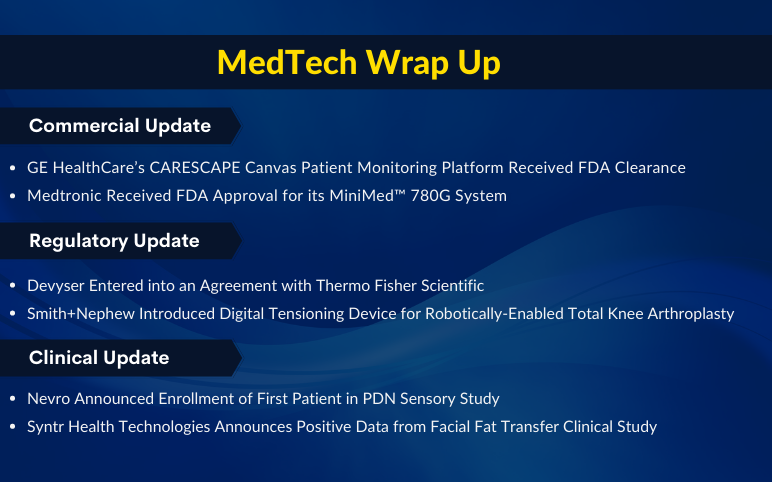Facial Implants: Evaluating the Reasons Behind the Growing Demand & Key Factors Driving the Market Growth
Jun 14, 2023
Table of Contents
Everyone has the desire to look beautiful. It makes oneself feel good and provides immense self-confidence. With the aid of modern technology, we now have cosmetic fixes for issues with our looks. Facial Implants and cosmetic surgeries demand is growing at an immense rate globally. Facial Implants are a type of long-term treatment or procedure that aim to improve facial contours by modifying the chin, cheekbone, or nasal structure. As per the International Society of Aesthetic Plastic Surgery (ISAPS) (in 2020), about 3,913,000+ face & head surgery performed globally, out of which 419,000+ facelift surgery and 852,000+ rhinoplasties were performed. The demand for facelift surgery, rhinoplasty, and total face & head surgery is growing exponentially. Facial Implants are not necessary to be done to improve appearance. The need may arise due to some facial injuries, infections, burns, facial deficiencies, or disorders. Facial Implants are intended to provide a long-term solution.
The Facial Implants Market is expected to grow at a CAGR of 8.02% during the forecast period (2023 to 2028). The Facial Implants Market size was valued at USD 2.56 billion in 2021 and is anticipated to reach USD 4.06 billion by 2028. North America occupies a major share of the overall facial implant market. The dominance of North America is due to the rising need for cosmetic and reconstructive facial operations in the region. According to the American Society of Plastic Surgeons statistics (2020), approximately 2,314,000+ cosmetic surgery was performed in the region in 2020 out of which 234,000+ facelift surgeries were performed. Additionally, the presence of a well-established healthcare system, rising patient awareness, an increase in demand for minimally invasive surgeries, and an increase in the number of trauma injury cases in the region are driving the market growth in the region.
Downloads
Click Here To Get the Article in PDF
What are the Major Facial Implants Types?
In order to treat developmental and congenital anomalies, restore post-traumatic deformities, and to improve aesthetic looks, several different types of facial implants are employed. Currently, advanced facial-implant materials are preferred over conventional autogenous bone grafts because they have a number of benefits, including reduced donor site morbidity, no graft resorption, and enhanced implant availability. The chin, mandibular angle, and malar region are the most common areas of aesthetic concern. Majorly, facial implants can be divided into three types, which are as follows –
Chin & Mandibular Implants
Mandibular Implants are intended to improve the facial profile and the jawline by strengthening the mandibular body, angle, and ramus. Mandibular augmentation surgery can help a wide range of patients, whether their anatomy is normal, inadequate, or surgically altered. But it is especially helpful if the lower jaw angle is undeveloped or if the person had a facelift. The jawline and jaw angle can be hidden by a facelift, artificially elevating it and making it less prominent. The contours and curves of the face will regain dynamic balance and depth when the shape and prominence of the jaw angle are restored. Mandibular angle implants are available in a variety of shapes, sizes, and materials. Mandibular angle augmentation surgery is opted for by several people, and it is a great choice as it leaves no visible scars. The incisions are well hidden inside the mouth.
There are three general shapes to cheek implants: malar, submalar, and combined. Malar & submalar implants are related to the cheek. It is done to customize the shape or augment weak facial structure and combat the effects of aging to remove a gaunt appearance. Malar implants are done by putting the implant right on the cheekbones. It is designed to treat a deficit of the cheekbone itself. The patient with a malar implant has higher-arched cheekbones and a more beautiful facial profile. Submalar is designed to fix a deficiency of the fleshy portion of the cheek and is placed directly below the most prominent portion of the cheekbone. After the submalar implant, the cheeks are restored to a fullness that eliminates the sunken look that is associated with age and illness.
Several different types of implant materials are used in malar & submalar implants. Synthetic silicone and polyethylene (medpor) are majorly used. While silicone cheek implants can be removed in the future because they don’t integrate with the facial tissue, hydroxyapatite cheek implants can integrate with natural bone tissue in the face and so become a permanent component of the cheek structure. In recent yeast, significant revolutionary improvements in the designing and manufacturing malar & submalar implants have been registered.
Nasal Implants
Nasal implants use synthetic materials which are inserted into the nose to change the nose’s overall structure, size, or form. It is mainly done for cosmetic enhancement or to modify the contour of the nose as an adjuvant to rhinoplasty. Sometimes the need for reconstruction may arise due to some medical issues, congenital disabilities, or injuries. Implants are inserted to either improve the nasal airway by strengthening the nasal valve area (link to the nasal valve).
Similarly, the implant may be harvested either from the same patient (autograft), from a donor (homograft), or manufactured from synthetic or semi-synthetic materials (alloplast). Autografts may be harvested from cartilage (which includes nasal septal cartilageis, conchal cartilage, and costal/ rib cartilage) or soft tissue (such as fascia, dermis, and fat). The alloplast material used in Nasal implants can vary, however, majorly silicone, micro-porous polymer, or PHDPE polymer is used. Because there is no chance of toxicity, rejection, or incompatibility with other implant materials, autografts are frequently chosen over them. Silicone implants are the only alloplastic implants that do not interact with the host tissue. The ease and convenience of using pre-made material that may be inserted during treatment is one of the benefits of employing implants. There may be time and cost savings as a result. There are several complications associated with nasal implant plastic surgery. Some of the major challenges include infections, extrusion, risk of movement, implant displacement, bleeding, tenderness, pressure on surrounding structures, swelling, and allergic reactions to foreign materials. Some of the risks associated with the nasal implant are for a short period of time. However, it may also lead to permanent or lifelong complications.
Facial Implants Market Trends and Dynamics
The Facial Implants Market is gaining immense momentum globally, owing to the rise in facial injuries, and an increase in the number of non-fatal traumatic injuries caused by road accidents, falls, and sports-related facial injuries, among others. As per the estimate, in the year 2021, between 20 and 50 million people worldwide suffer from non-fatal injuries every year. Moreover, the rising number of facial reconstructive surgeries and the growing cases of facial traumas among the population across the globe are among other major factors driving the demand for facial implants. Furthermore, the exponentially growing burden of the geriatric population is also anticipated to raise the demand for facial implants in the forthcoming years. In 2020, there were an estimated 727 million people aged 65 years and above. Also, various studies have revealed that facial reconstruction surgeries such as facelift surgeries are more common procedures opted for by people aged 60 and above. However, high procedural costs and complications associated with the use of facial implants are a few factors expected to hamper the Facial Implants demand.

Key Players in the Facial Implants Market
Globally, several major Facial Implants companies are active in the market to provide the best solutions. Some of the key players in the domain include Medartis AG, Eurosurgical Ltd., Guangzhou Wanhe Plastic Materials Co., Ltd., Sebbin, Hanson Medical Inc., SurgiSil, Implantech, Surgiform Technologies LLC, Xilloc Medical Int B.VOrtho Baltic, POLYTECH Health & Aesthetics GmbH, Stryker, GALDERMA, AbbVie, Suneva Medical, and others. Owing to rising demand several new players are anticipated to enter the market in the upcoming years with new and more innovative products.
Recent Developmental Activities in the Facial Implants Market:
In recent years, several major clinical, commercial, and regulatory developments have been registered in the Facial Implants Market. Some of the noteworthy developments in the domain include:
- On February 01, 2021, Galderma received the US FDA approval for its Restylane® Defyne for the augmentation and correction of mild to moderate chin retrusion for adults over the age of 21.
- On December 23, 2020, Implantech Associates Inc. received FDA clearance for its customized contour implant (chin prostheses).
Facial Implants Market – Future Outlook
As per DelveInsight, the rise in demand for facial implants is anticipated to grow immensely in the coming years owing to the rise in the cases of face injuries across the globe. In addition, an increase in the volume of face reconstructive surgeries due to non-fatal injuries or facial deformities, growing demand for facial implant surgeries among the rising old age population to look aesthetically presentable, and an increase in technological advancement in the product arena, are anticipated drive the Facial Implants products and services. Despite many benefits of Facial Implants, several side effects, such as hemorrhage, infection, bone resorption, numbness, displacement, and asymmetry, have also been documented. The issue, and challenges with the marketed products, affect user confidence and truthfulness over the Facial Implants products. However, several companies are actively working in the Facial Implants market to deliver new and innovative products and overcome the existing challenge with the currently marketed products. Owing to the rising demand for Facial Implants, various major commercial activities related to the merger, collaboration, and acquisitions are expected to take place in the market in the upcoming years. Similarly, health regulatory authorities have a favorable approach towards Facial Implants products. Several products have been approved by regulatory agencies in recent years, many products are awaiting approval and are expected to hit the market in the upcoming years.




